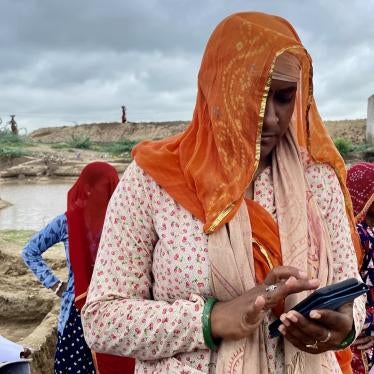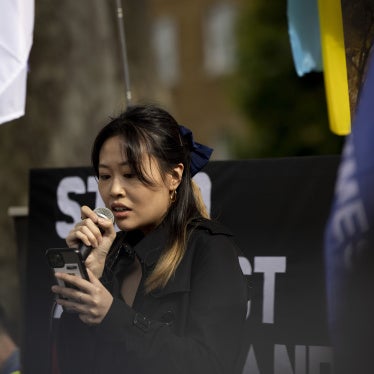|
Commentary
Afghan police reform should be about more than protecting soldiers
Attacks on Nato soldiers triggered action against the Afghan Local Police, yet abuses against civilians have been ignored
Published in:
The Guardian
The announcement by Nato and US forces that they would suspend the training of new recruits and re-vet all 16,300 members of the Afghan Local Police (ALP) force was long overdue. Sadly, the decision was only made after an alarming escalation of so-called "green on blue" attacks, in which Nato forces were killed by their ostensible Afghan allies. This year alone, 45 foreign soldiers have died in more than 30 "green-on-blue" attacks, at least 15 in August alone.
While it is understandable that Nato and the US have taken urgent steps to protect their own soldiers, it is shocking that ALP members and recruits have not been thoroughly vetted before. As Human Rights Watch and others have reported over the past two years – long before the recent spate of green on blue attacks – the ALP has repeatedly been involved in serious abuses against Afghan civilians. But the killings, rape, and extortion of Afghan civilians evidently was not reason enough for a rethink.
The ALP was created in 2010 at the request of Gen David Petraeus, the former commander of international forces in Afghanistan and now the director of the CIA. The ALP is a loose network of local defence forces designed to mobilise and arm local civilians to defend their communities from the Taliban in areas where the national police and army have a limited presence. ALP recruits are mentored by foreign troops, most frequently US special forces, but in some parts of the country by troops from other nations, including Britain. They are nominally under the supervision of the Afghanistan National Police, but in practice they are sometimes no more than deputised gunmen loyal to a local warlord or members of violent local militias who are given a new uniform.
While ALP units have been credited with improving security in some locations, there were warning signs about the programme from the beginning. Afghanistan has a long history of local control by armed groups. Not only have these groups frequently preyed on the local population and contributed to ethnic violence, they have too often spun beyond the control of those who established and supported them. The ALP from the beginning risked being yet another militia in which armed men were essentially set loose under the colour of law on local communities.
Human rights organisations identified structural problems with the ALP early on, including a system of vetting easily defeated by local warlords, a command and control structure undermined by the limited capacity of the Afghanistan National Police, and virtually no effective means for accountability when abuses are committed by ALP members.
As the programme was implemented, reports of abuses against Afghan civilians began to pile up. In a September 2011 report, Human Rights Watch documented extortion, illegal raids and detention, theft, assault, rape, and murder by the ALP. Since then, the abuses have continued, including the
May 2012 alleged rape of a teenage girl in northern Kunduz province by ALP members.
For the US and Nato, with plans to expand the force to 30,000 by the end of 2014, the ALP is a cornerstone of the handover of Afghanistan's security to Afghan forces. It has become an integral part of the international withdrawal strategy, which is one reason why the US and Nato have mostly dismissed concerns raised by human rights groups about the ALP, claiming that abuses were committed by other armed groups or were aberrations that were dealt with.
One exception was a US military investigation triggered by the Human Rights Watch report. The investigation, concluded in December 2011, largely confirmed the contents of the Human Rights Watch report, including a need for better understanding of local context and ethnic dynamics, deficits in training, and a lack of procedures to fire or discipline abusive ALP members. Unofficially, many US and UK officers have expressed serious concern about the way the ALP was set up and how it may become an uncontrolled monster unless it is quickly brought under proper command and control.
Unfortunately, the new measures announced by Nato to reform the ALP – including increased counter-intelligence, new systems for detecting "insider threats", establishment of anonymous reporting, and enhanced cultural training – are focused solely on containing the threat that the ALP and other Afghan security forces present to foreign troops working alongside them, not improving the way that ALP members treat Afghans.
Earlier attention by Nato and the US to the ALP abuse of civilians might have not only better protected civilians but also prevented some "green on blue" attacks. The same measures human rights activists have been recommending – better vetting, more comprehensive training, a fully functional command structure, and real accountability mechanisms to discipline, dismiss and prosecute those responsible for abuse – might have screened out or expelled ALP members at risk of turning on their international partners.
Now that Nato and the US have taken on the difficult but essential task it is time to go further and engage in wholesale reform of an institution that poses a serious threat, not just to foreign troops but also to Afghan civilians. Any overhaul of the programme should value protection of civilians just as highly as protection of Nato soldiers.
Your tax deductible gift can help stop human rights violations and save lives around the world.
Region / Country
Most Viewed
-
November 25, 2019
A Dirty Investment

-
September 20, 2017
Iraq/KRG: 1,400 Women, Children From ISIS Areas Detained

-
July 21, 2025
“You Feel Like Your Life Is Over”

-
November 12, 2018
“Shall I Feed My Daughter, or Educate Her?”

-
June 14, 2023
“No Internet Means No Work, No Pay, No Food”



